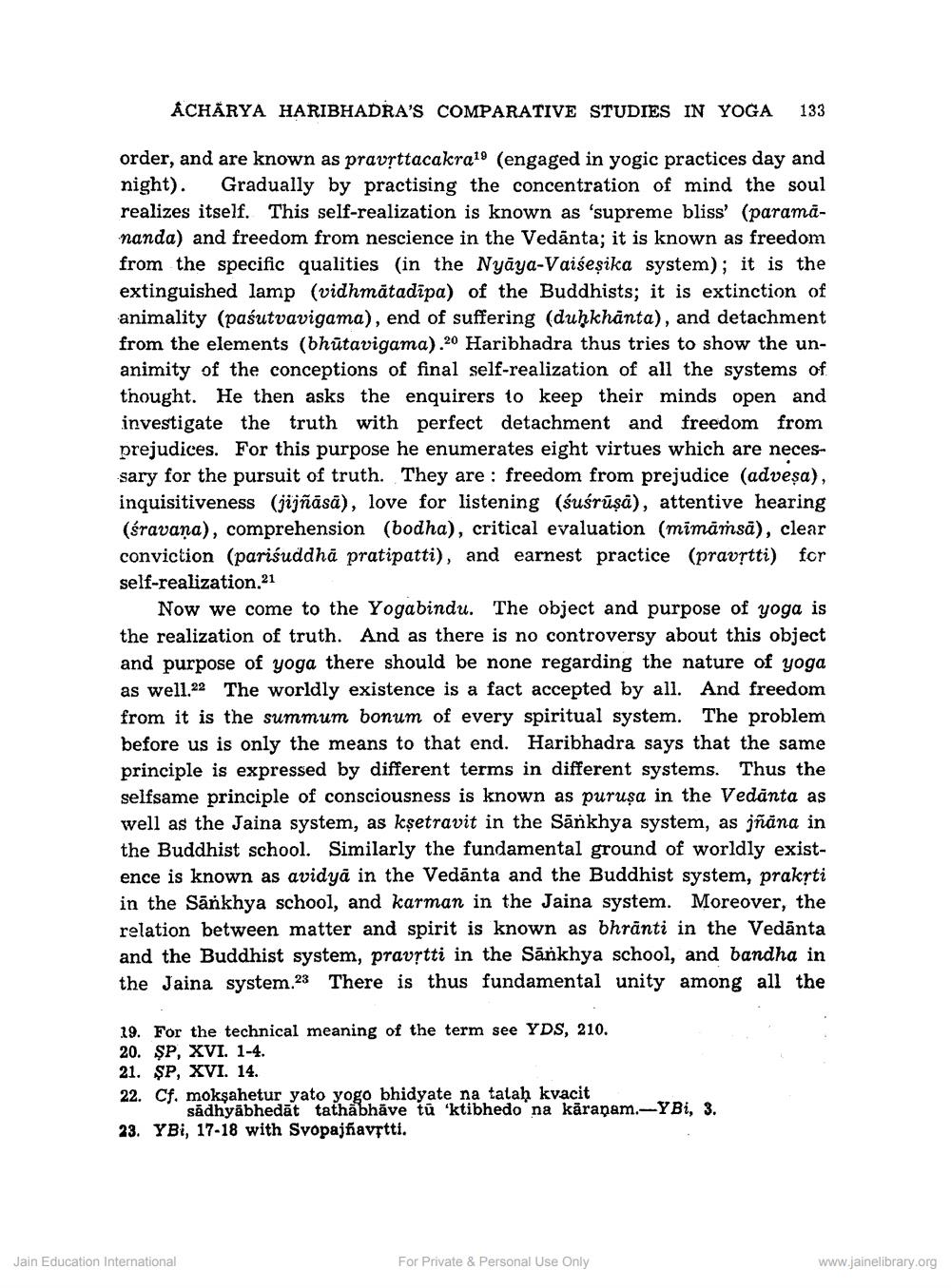Book Title: Acarya Haribhadras Comparative Studies in Yoga Author(s): Nathmal Tatia Publisher: Z_Vijay_Vallabh_suri_Smarak_Granth_012060.pdf View full book textPage 5
________________ ÁCHÄRYA HARIBHADRA'S COMPARATIVE STUDIES IN YOGA 133 order, and are known as pravrttacakrai! (engaged in yogic practices day and night). Gradually by practising the concentration of mind the soul realizes itself. This self-realization is known as 'supreme bliss' (paramananda) and freedom from nescience in the Vedānta; it is known as freedom from the specific qualities in the Nyāya-Vaiseșika system); it is the extinguished lamp (vidhmātadipa) of the Buddhists; it is extinction of animality (paśutvavigama), end of suffering (duhkhänta), and detachment from the elements (bhūtavigama).20 Haribhadra thus tries to show the unanimity of the conceptions of final self-realization of all the systems of thought. He then asks the enquirers to keep their minds open and investigate the truth with perfect detachment and freedom from prejudices. For this purpose he enumerates eight virtues which are necessary for the pursuit of truth. They are : freedom from prejudice (adveşa), inquisitiveness (jijñāsā), love for listening (susrūsa), attentive hearing (śravana), comprehension (bodha), critical evaluation (mimaṁsā), clear conviction (parisuddha pratipatti), and earnest practice (pravstti) for self-realization.21 Now we come to the Yogabindu. The object and purpose of yoga is the realization of truth. And as there is no controversy about this object and purpose of yoga there should be none regarding the nature of yoga as well.22 The worldly existence is a fact accepted by all. And freedom from it is the summum bonum of every spiritual system. The problem before us is only the means to that end. Haribhadra says that the same principle is expressed by different terms in different systems. Thus the selfsame principle of consciousness is known as puruşa in the Vedānta as well as the Jaina system, as kşetravit in the Sānkhya system, as jñāna in the Buddhist school. Similarly the fundamental ground of worldly existence is known as avidyā in the Vedānta and the Buddhist system, praksti in the Sānkhya school, and karman in the Jaina system. Moreover, the relation between matter and spirit is known as bhrānti in the Vedanta and the Buddhist system, pravștti in the Sānkhya school, and bandha in the Jaina system.23 There is thus fundamental unity among all the 29. For the technical meaning of the term see YDS, 210. 20. ŞP, XVI. 1-4. 21. SP, XVI. 14. 22. Cf. moksahetur yato yogo bhidyate na tataḥ kvacit sādhyabhedāt tathābhāve tū 'ktibhedo na kāranam.-Y Bi, 3. 23. YBi, 17-18 with Svopajñavrtti. Jain Education International For Private & Personal Use Only www.jainelibrary.orgPage Navigation
1 ... 3 4 5 6 7 8 9 10 11 12 13 14
